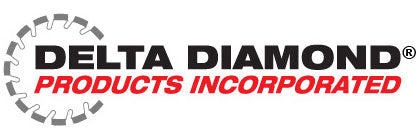When it comes to cutting through concrete, precision and efficiency are paramount. Whether you're a professional contractor or a DIY enthusiast, understanding the science behind the process can help you make informed choices and achieve optimal results. Diamond blades are the go-to tools for cutting concrete with unparalleled precision. In this blog post, we will delve into the fascinating world of diamond blades and uncover the secrets of how they cut through one of the toughest building materials - concrete.
The Basics of Diamond Blades
Before diving into the specifics of how diamond blades cut concrete, let's briefly explore what diamond blades are and why diamonds are used in the first place.
-
Diamond Blades: Diamond blades are cutting tools designed for a variety of materials, including concrete, asphalt, stone, and more. They consist of a metal core with synthetic diamond particles bonded to the outer edge. The metal core provides the blade's structural integrity, while the diamonds act as the cutting teeth.
-
Why Diamonds? Diamonds are renowned for their exceptional hardness, ranking at the top of the Mohs scale of mineral hardness. This makes them ideal for cutting through tough materials like concrete. However, not all diamonds are equal; industrial-grade synthetic diamonds are used in the construction of these blades because they are tougher and more suitable for heavy-duty cutting.
Now, let's dive into the fascinating mechanics of how diamond blades cut through concrete.
Abrasion and Fracture
The primary mechanisms behind diamond blades cutting through concrete are abrasion and fracture. When a diamond blade comes into contact with the surface of concrete, several things happen simultaneously:
a. Abrasion: The abrasive action occurs as the synthetic diamond particles on the blade's edge grind against the concrete surface. Diamonds are exceptionally hard, and as they rotate against the concrete, they gradually wear away the material, creating a cut.
b. Fracture: Simultaneously, diamonds on the blade's edge initiate fractures in the concrete. This process, known as microfracturing, happens due to the immense pressure applied by the rotating blade. As the fractures propagate, they weaken the concrete, making it easier for the blade to continue cutting through.
Cooling and Lubrication
Cutting through concrete generates a significant amount of heat, which can damage the blade and reduce cutting efficiency. To combat this issue, diamond blades are designed with cooling and lubrication systems. These may include water channels or holes that disperse water onto the cutting surface. The water not only cools the blade but also flushes away the concrete dust created during the cutting process, ensuring a cleaner and more efficient cut.
Blade Composition and Design
The composition and design of diamond blades also play a crucial role in their cutting efficiency. Blades are typically segmented, with spaces between the segments allowing for efficient debris removal and cooling. Different types of blades are designed for specific cutting applications, such as wet or dry cutting, and the hardness of the concrete being cut
Safety Considerations
While diamond blades are highly effective, they are also powerful tools that demand caution when handling. Always wear appropriate safety gear, including eye protection, gloves, and a dust mask, to protect yourself from flying debris and inhaling dust particles generated during the cutting process. Additionally, follow the manufacturer's guidelines for proper blade use, maintenance, and speed recommendations.
Diamond blades are a testament to the incredible capabilities of modern engineering and materials science. Their ability to cut through tough materials like concrete with precision and efficiency has revolutionized construction and various other industries. Understanding the science behind how diamond blades cut concrete not only helps you make informed decisions when selecting the right tool for the job but also enhances your appreciation for the craftsmanship that goes into creating these remarkable cutting tools. As you embark on your next concrete-cutting project, remember the key principles of abrasion, fracture, cooling, and blade design, and always prioritize safety to achieve the best results.
